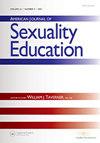求助PDF
{"title":"互动、艺术、有趣和怪异:探索面对面、虚拟和混合怀孕预防项目中青少年参与的促进因素和挑战","authors":"M. McFarlane, Balca Alaybek, Anna Schatz, J. Painter, Gordon P. Olsen, Kathryn M. Hogan, Tondi Mondoloka, Hanzhe Zhang, J. McCleary-Sills, Alicia Richmond","doi":"10.1080/15546128.2022.2139034","DOIUrl":null,"url":null,"abstract":"Although U.S. adolescent birth rates in general have declined in recent decades, they continue to be a primary public health concern due to notable disparities among adolescent birth rates. In response, pregnancy prevention program development has increasingly focused on understanding how to better serve the needs of adolescents in underserved populations. To inform future program development and implementation efforts, this qualitative study explored which attributes of programs facilitated and hindered youth engagement. We collected data from educators (N = 43) and a subset of youth program participants (N = 249) from programs implemented by 14 organizations in different community-based settings. We used three data collection methods: (1) post-session surveys completed by educators, (2) post-program implementation interviews with educators, and (3) individual and focus group interviews with youth participants. Qualitative analyses revealed that educators who skillfully facilitated interactive activities and safe and inclusive learning environments promoted engagement. Feeling uncomfortable and awkward during program activities, learning in mixed-gender settings, and COVID-19 disruptions hindered engagement. Additionally, we found that youth participants had conflicting views on learning about sexual relationships at churches. Participants and educators had conflicting views on the benefit of youth attending programs with previously acquainted friends. © 2022 The MITRE Corporation.","PeriodicalId":45712,"journal":{"name":"American Journal of Sexuality Education","volume":" ","pages":""},"PeriodicalIF":1.2000,"publicationDate":"2022-11-22","publicationTypes":"Journal Article","fieldsOfStudy":null,"isOpenAccess":false,"openAccessPdf":"","citationCount":"0","resultStr":"{\"title\":\"Interactive, Artistic, Fun, and Weird: Exploring Facilitators and Challenges to Youth Engagement across In-Person, Virtual, and Hybrid Pregnancy Prevention Programs\",\"authors\":\"M. McFarlane, Balca Alaybek, Anna Schatz, J. Painter, Gordon P. Olsen, Kathryn M. Hogan, Tondi Mondoloka, Hanzhe Zhang, J. McCleary-Sills, Alicia Richmond\",\"doi\":\"10.1080/15546128.2022.2139034\",\"DOIUrl\":null,\"url\":null,\"abstract\":\"Although U.S. adolescent birth rates in general have declined in recent decades, they continue to be a primary public health concern due to notable disparities among adolescent birth rates. In response, pregnancy prevention program development has increasingly focused on understanding how to better serve the needs of adolescents in underserved populations. To inform future program development and implementation efforts, this qualitative study explored which attributes of programs facilitated and hindered youth engagement. We collected data from educators (N = 43) and a subset of youth program participants (N = 249) from programs implemented by 14 organizations in different community-based settings. We used three data collection methods: (1) post-session surveys completed by educators, (2) post-program implementation interviews with educators, and (3) individual and focus group interviews with youth participants. Qualitative analyses revealed that educators who skillfully facilitated interactive activities and safe and inclusive learning environments promoted engagement. Feeling uncomfortable and awkward during program activities, learning in mixed-gender settings, and COVID-19 disruptions hindered engagement. Additionally, we found that youth participants had conflicting views on learning about sexual relationships at churches. Participants and educators had conflicting views on the benefit of youth attending programs with previously acquainted friends. © 2022 The MITRE Corporation.\",\"PeriodicalId\":45712,\"journal\":{\"name\":\"American Journal of Sexuality Education\",\"volume\":\" \",\"pages\":\"\"},\"PeriodicalIF\":1.2000,\"publicationDate\":\"2022-11-22\",\"publicationTypes\":\"Journal Article\",\"fieldsOfStudy\":null,\"isOpenAccess\":false,\"openAccessPdf\":\"\",\"citationCount\":\"0\",\"resultStr\":null,\"platform\":\"Semanticscholar\",\"paperid\":null,\"PeriodicalName\":\"American Journal of Sexuality Education\",\"FirstCategoryId\":\"1085\",\"ListUrlMain\":\"https://doi.org/10.1080/15546128.2022.2139034\",\"RegionNum\":0,\"RegionCategory\":null,\"ArticlePicture\":[],\"TitleCN\":null,\"AbstractTextCN\":null,\"PMCID\":null,\"EPubDate\":\"\",\"PubModel\":\"\",\"JCR\":\"Q2\",\"JCRName\":\"EDUCATION & EDUCATIONAL RESEARCH\",\"Score\":null,\"Total\":0}","platform":"Semanticscholar","paperid":null,"PeriodicalName":"American Journal of Sexuality Education","FirstCategoryId":"1085","ListUrlMain":"https://doi.org/10.1080/15546128.2022.2139034","RegionNum":0,"RegionCategory":null,"ArticlePicture":[],"TitleCN":null,"AbstractTextCN":null,"PMCID":null,"EPubDate":"","PubModel":"","JCR":"Q2","JCRName":"EDUCATION & EDUCATIONAL RESEARCH","Score":null,"Total":0}
引用次数: 0
引用
批量引用
Interactive, Artistic, Fun, and Weird: Exploring Facilitators and Challenges to Youth Engagement across In-Person, Virtual, and Hybrid Pregnancy Prevention Programs
Although U.S. adolescent birth rates in general have declined in recent decades, they continue to be a primary public health concern due to notable disparities among adolescent birth rates. In response, pregnancy prevention program development has increasingly focused on understanding how to better serve the needs of adolescents in underserved populations. To inform future program development and implementation efforts, this qualitative study explored which attributes of programs facilitated and hindered youth engagement. We collected data from educators (N = 43) and a subset of youth program participants (N = 249) from programs implemented by 14 organizations in different community-based settings. We used three data collection methods: (1) post-session surveys completed by educators, (2) post-program implementation interviews with educators, and (3) individual and focus group interviews with youth participants. Qualitative analyses revealed that educators who skillfully facilitated interactive activities and safe and inclusive learning environments promoted engagement. Feeling uncomfortable and awkward during program activities, learning in mixed-gender settings, and COVID-19 disruptions hindered engagement. Additionally, we found that youth participants had conflicting views on learning about sexual relationships at churches. Participants and educators had conflicting views on the benefit of youth attending programs with previously acquainted friends. © 2022 The MITRE Corporation.


